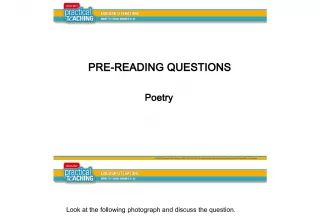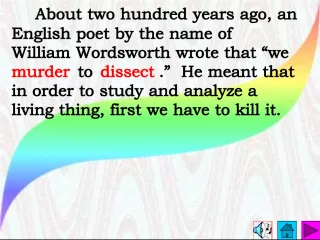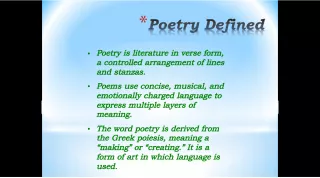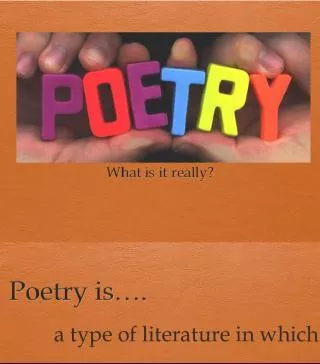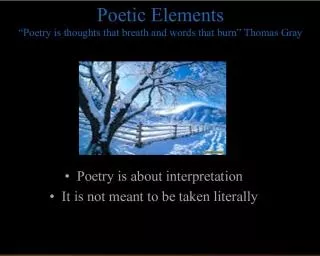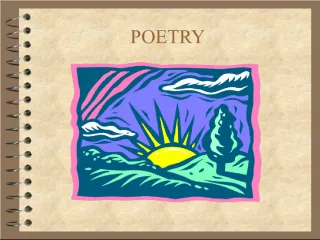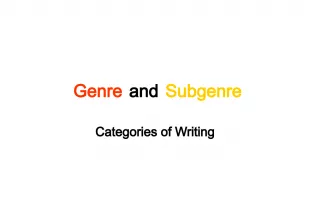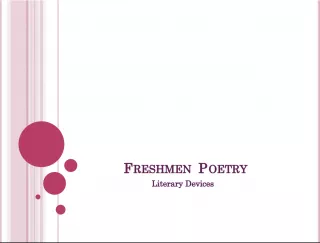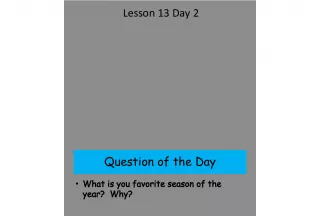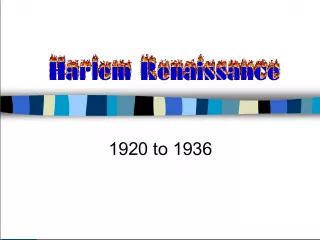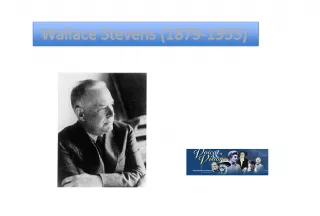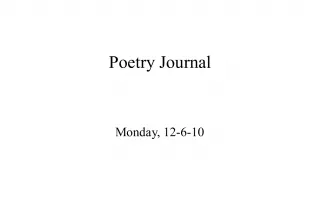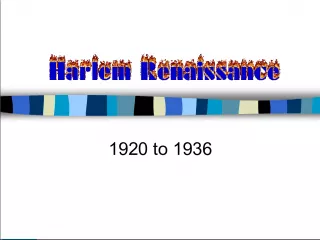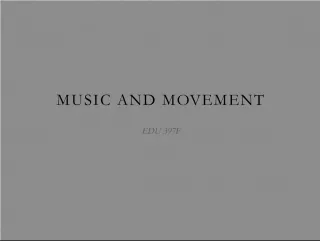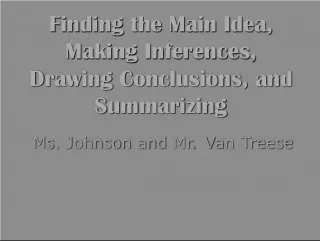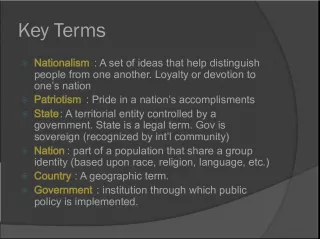Understanding Personification in Poetry
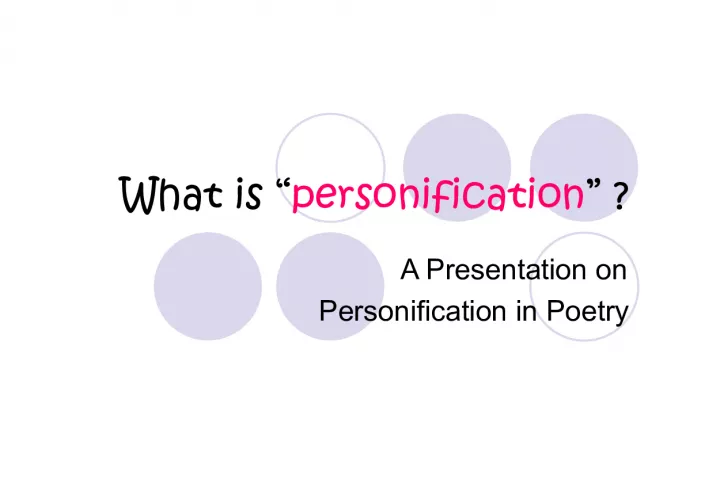

Learn what personification is and why writers use it in poetry. Discover how the word "person" in personification gives a clue to its meaning - giving human qualities to nonhuman objects and ideas.
- Uploaded on | 0 Views
-
 eilev
eilev
About Understanding Personification in Poetry
PowerPoint presentation about 'Understanding Personification in Poetry'. This presentation describes the topic on Learn what personification is and why writers use it in poetry. Discover how the word "person" in personification gives a clue to its meaning - giving human qualities to nonhuman objects and ideas.. The key topics included in this slideshow are . Download this presentation absolutely free.
Presentation Transcript
Slide1What is “personification ” ? A Presentation on Personification in Poetry
Slide2PERSONIFICATION What word do you notice inside the word: “personification” ? How does the word “person” give you a clue as to the meaning of personification? Why do you think a writer would want to use personification in a poem?
Slide3And the answer is…… Personification is giving human qualities (such as emotion) and actions to nonhuman objects and/or ideas.
Slide4The Sky Is LowBy: Emily Dickinson The Sky is low -- the Clouds are mean. A Travelling Flake of Snow Across a Barn or through a Rut Debates if it will go – A Narrow Wind complains all Day How some one treated him Nature, like Us is sometimes caught Without her Diadem.
Slide5Unfamiliar Vocabulary diadem- debates-
Slide6Discussion Questions What are some examples of personification in the poem? Why do you think Dickenson chose to personify weather? What kind of words does she use to set the mood of the poem? Can you think of other words that might do the same thing? How does she intensify the image of an unpleasant day by using personification? What does she compare nature to? Why do you think she did this?
Slide7Two SunflowersMove in the Yellow Room. By: William Blake "Ah, William, we're weary of weather," said the sunflowers, shining with dew. "Our traveling habits have tired us. Can you give us a room with a view?" They arranged themselves at the window and counted the steps of the sun, and they both took root in the carpet where the topaz tortoises run.
Slide8Discussion Questions: What is different about how Blake uses personification in his poem? Why do you think he chooses to have the sunflowers talk? What kinds of descriptive words does Blake use? Why do you think he uses these words?
Slide9April Rain SongBy: Langston Hughs Let the rain kiss you Let the rain beat upon your head with silver liquid drops Let the rain sing you a lullaby The rain makes still pools on the sidewalk The rain makes running pools in the gutter The rain plays a little sleep song on our roof at night And I love the rain .
Slide10Discussion Questions: What are Langston Hughes’ feeling toward rain? What does he want his audience to do? How does personification help him make his point? How is his use of personification different from that of Dickinson or Blake? What do you notice about the language he uses to describe the rain? How does he use repetition to make his point?
Slide11Final Discussion ?’s What are the different moods of each poem? How does the use of personification by each poet contribute to the mood of his or her poem? What are the different types of words and patterns that each poet uses? Which poem do you like best? Why?
